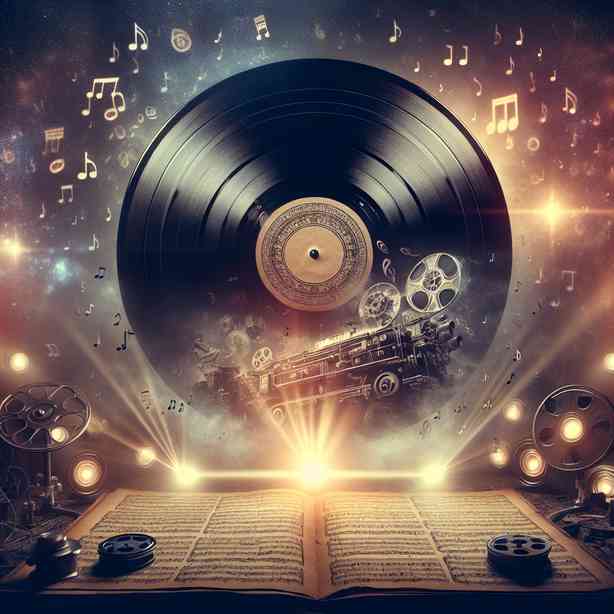
Soundtracks play a crucial role in the overall cinematic experience, often serving as the emotional backbone of a film. They transcend mere background noise and become integral to storytelling, character development, and audience connection. The right soundtrack can elevate scenes, evoke feelings, and leave a lasting impression long after the credits roll. In this discussion, we will delve into the intricacies of soundtracks that have carried entire films, exploring how they shape narratives and enhance viewer engagement.
First, it is essential to understand the multifaceted role of music in film. Soundtracks can create a mood, underscore dramatic moments, and even foreshadow future events. A well-composed score can transform a simple scene into something profound, providing depth that might not be conveyed through visuals alone. In this way, the relationship between sound and image becomes a symbiotic one. For instance, consider the iconic score of “The Lion King,” composed by Hans Zimmer and featuring songs by Elton John. The music not only complements the vibrant visuals of the African savanna but also encapsulates themes of loss, redemption, and the circle of life, resonating deeply with audiences of all ages.
Another notable example is the soundtrack of “Pulp Fiction,” curated by Quentin Tarantino. The eclectic mix of songs carefully selected for each scene adds a layer of authenticity and nostalgia, inviting the audience into the film’s gritty underbelly. Each track is meticulously chosen to reflect the film’s characters and situations, demonstrating how a well-structured soundtrack is essential for building atmosphere and context within the story. The unexpected juxtapositions of different genres and eras highlight Tarantino’s unique storytelling style, making the soundtrack memorable in its own right and contributing to the film’s cult status.
An essential aspect of effective soundtracks is the ability to utilize motifs and themes. Composers often create specific musical phrases that represent particular characters or ideas. For example, John Williams’ score for the “Star Wars” saga is rife with such motifs. The “Imperial March” associated with Darth Vader immediately evokes feelings of menace and power, while the themes for characters like Luke Skywalker and Princess Leia encapsulate their respective journeys. This deliberate use of musical themes enhances narrative coherence, allowing audiences to connect emotionally with the characters and their arcs. The recurrent melodies serve as emotional touchstones throughout the series, solidifying the impact of the soundtracks across multiple films.
Additionally, soundtracks can serve as a narrative device in films, subtly guiding viewers through the storyline. In “Inception,” composer Hans Zimmer employs a recurring musical element that intertwines with the film’s complex themes of dreams and reality. The use of the “braaam” sound, coupled with deeply layered orchestration, creates tension and urgency, allowing the audience to experience the characters’ emotional turmoil. This clever integration of score into the narrative structure enhances the immersive experience, leaving viewers captivated and engaged with the unfolding plot.
The emotional power of a soundtrack is also evident in films that rely heavily on lyrics to convey character emotions and situations. Think of “A Star is Born,” where the music and lyrics reflect the intricate dynamics of the relationship between the main characters, played by Bradley Cooper and Lady Gaga. The songs are not just interludes; they are pivotal moments that articulate the unspoken feelings and struggles within the narrative. The raw vulnerability expressed through the music makes it an essential component of the film’s storytelling, allowing audiences to connect with the characters on a deeper emotional level.
Moreover, the cultural context and historical significance of certain soundtracks cannot be overlooked. For instance, the music of “Schindler’s List,” also by John Williams, utilizes a haunting violin solo performed by Itzhak Perlman to evoke the horror and tragedy of the Holocaust. The emotional weight of this composition elevates the film’s impact, transforming it into a poignant commentary on human suffering and the enduring spirit of resilience. In this case, the soundtrack is not merely enhancing the film; it is integral to its message and legacy, solidifying its place in cinematic history.
Exploring soundtracks across different genres reveals how versatile music can be in enhancing variety in storytelling. In animated films, for instance, the soundtrack plays a vital role in character development and world-building. “Frozen,” with its unforgettable anthem “Let It Go,” exemplifies this beautifully. The song is not just catchy; it encapsulates the protagonist’s struggle for acceptance and identity, making it a critical turning point in the narrative. The soundtrack serves both as entertainment and as a vehicle for exploring themes of self-discovery, ultimately resonating with audiences on multiple levels.
In conclusion, soundtracks that carry the whole film are often the unsung heroes of cinema. They do more than simply accompany visuals; they shape the viewer’s experience, evoke emotions, and deepen the connection to the narrative. From the iconic scores of legendary composers to the eclectic playlists curated for contemporary films, the significance of soundtracks extends beyond mere entertainment. As we reflect on the films that have moved us, it becomes clear that the music accompanying them has been instrumental in creating memories that linger long after the final scene fades to black. Whether it’s through powerful orchestration, thoughtful lyricism, or thematic motifs, soundtracks remain a vital component of what makes cinema a truly immersive art form. As we continue to explore the evolving landscape of film music, we can only anticipate how future composers will continue to innovate and move audiences in their own extraordinary ways.


